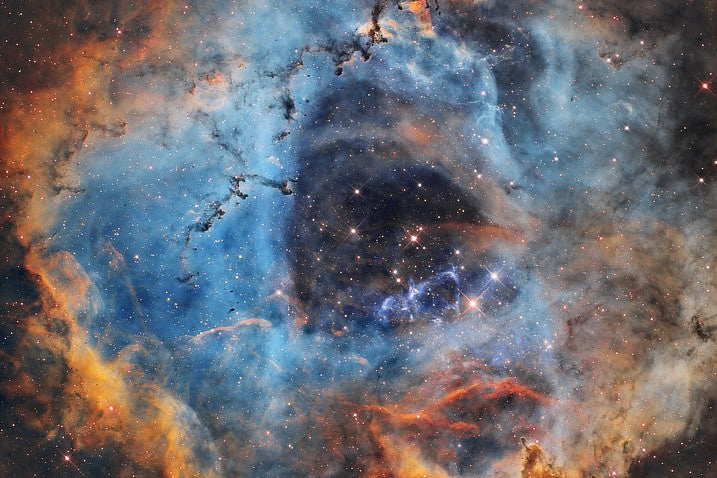Astrophotography has become increasingly popular in recent years, with photographers and astronomers alike capturing stunning images of the cosmos. One of the biggest considerations when taking deep space astrophotography is the choice of focal length. Focal length plays a crucial role in determining the magnification and field of view of your image. In this article, we will explore the best focal length for deep space astrophotography.
First, let's define what we mean by deep space astrophotography. This refers to capturing images of objects beyond our solar system, such as galaxies, nebulae, and star clusters. These objects are typically quite faint and require specialized equipment to capture.
When it comes to choosing the best focal length for deep space astrophotography, there are a few factors to consider. These include the size of the object you're photographing, the level of detail you want to capture, and the amount of light pollution in your area.
Generally speaking, longer focal lengths are better for capturing small, distant objects with greater detail. Shorter focal lengths, on the other hand, are better for capturing larger objects or wide-field views of the sky.
For deep space astrophotography, the most commonly used focal lengths range from 400mm to 1200mm. Within this range, there are a few standout options that are popular among astrophotographers.
One popular choice is the 400mm to 500mm range. This focal length is ideal for capturing larger objects, such as the Andromeda Galaxy, while still allowing for a good amount of detail. This range is also great for capturing star clusters, which can be quite large in the night sky.
Another popular focal length for deep space astrophotography is 800mm to 1000mm. This range is great for capturing smaller objects, such as nebulae, with greater detail. It also works well for capturing galaxies that are farther away.
For those looking to capture even more detail, focal lengths above 1000mm can be used. However, it's important to keep in mind that longer focal lengths can be more challenging to work with, as they require a more stable setup and may require additional equipment, such as a mount or guiding system.
In addition to focal length, it's also important to consider the aperture of your lens. A larger aperture allows more light to enter the lens, which can help capture faint objects more easily. However, larger apertures can also be more expensive and may require additional equipment, such as a specialized filter to reduce light pollution.
When it comes to capturing deep space objects, it's important to remember that there is no one-size-fits-all solution. The best focal length for your specific needs will depend on a variety of factors, including your equipment, location, and the objects you're looking to capture.
In addition to focal length and aperture, there are a few other tips and tricks to keep in mind when capturing deep space astrophotography. One important consideration is the use of a tracking mount or guiding system. These tools help keep your camera steady and prevent motion blur, which can ruin an otherwise great shot.
It's also important to be patient and persistent. Capturing deep space objects can be a time-consuming process, and it may take several attempts to capture the perfect shot. However, with the right equipment and techniques, anyone can capture stunning images of the cosmos.
In conclusion, the best focal length for deep space astrophotography is a crucial consideration when capturing stunning images of the cosmos. Choosing the right focal length will depend on a variety of factors, including the size and distance of the object you're photographing, the level of detail you want to capture, and the amount of light pollution in your area.
While there is no one-size-fits-all solution, there are several popular focal lengths that are commonly used by astrophotographers, such as the 400mm to 500mm range for capturing larger objects, and the 800mm to 1000mm range for capturing smaller objects with greater detail.
In addition to focal length, it's also important to consider the aperture of your lens, the use of a tracking mount or guiding system, and to be patient and persistent in your pursuit of the perfect shot.
With the right equipment, techniques, and a bit of patience, anyone can capture stunning images of the cosmos. So go ahead, experiment with different focal lengths, and see what wonders of the universe you can capture.
More Astrophotography Topics:
- How to find the North Star?
- Astrophotography Equipment for Beginners
- Astrophotography for Beginners
- Best Camera for Astrophotography
- Best Telescope for Astrophotography
- Best Telescope for Deep Space Astrophotography
- What Equipment Do I Need for Astrophotography
- Astrophotography Camera Settings
- Astrophotography Image Processing
- Night Sky Astrophotography Tips
- Milky Way Astrophotography Tips
- Beginner Deep Sky Astrophotography Targets
- Astrophotography Setup for Beginners
- Astrophotography Tips for Beginners
- Astrophotography for Dummies
- Astrophotography Image Editing Software
- Astrophotography Focusing Techniques
- Best Astrophotography Star Tracking Mount
- Best Beginner Astrophotography Targets
- Best Image Stacking Software for Astrophotography
- Best Narrowband Astrophotography Targets
- Astrophotography Targets by Month
- Good Widefield Astrophotography Targets
- GIMP Astrophotography Plugins
- Flat Frames Astrophotography
- Bias Frames Astrophotography
- Dark Frames Astrophotography
- Calibration Frames Astrophotography
- Dithering Astrophotography
- What is Astrophotography
- Starnet Astrophotography
- Star Tracker Astrophotography
- Best Astrophotography Books
- Astrophotography Setups Under $2000
- Best Phone Tripod for Astrophotography
- Best ISO for Long Exposure Astrophotography
- Removing Brown Tones Astrophotography Images
- Best Guide Scope for Astrophotography
- Do I Need a Guide Scope for Astrophotography
- Astrophotography Targets by Focal Length
- Astrophotography Binning
- Astrophotography Exposure Time
- Bortle Scale
- Tripod Position

